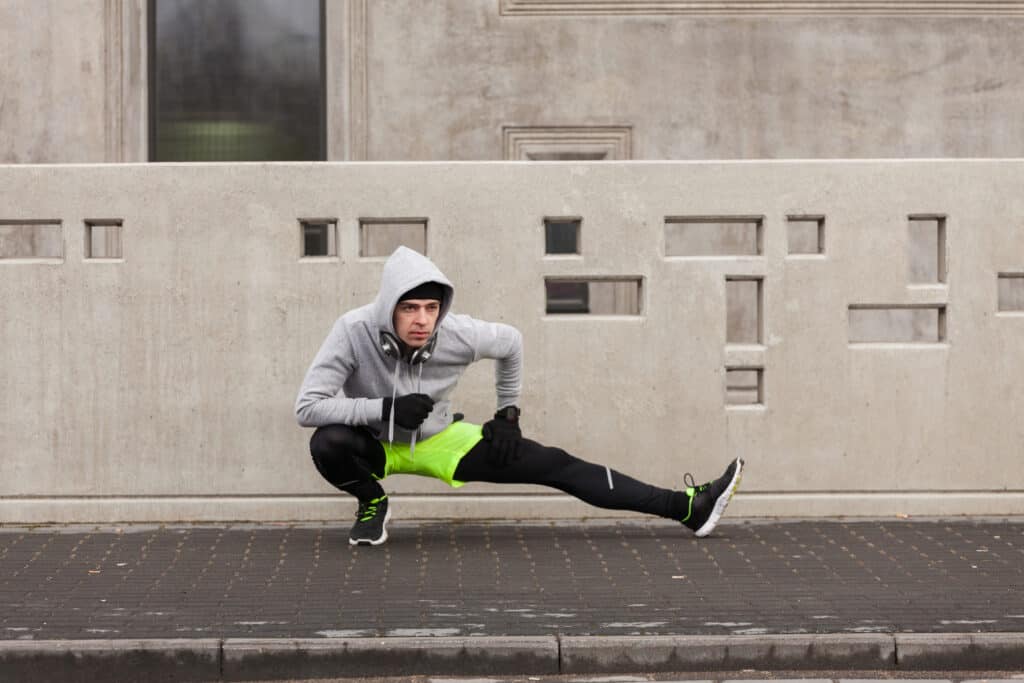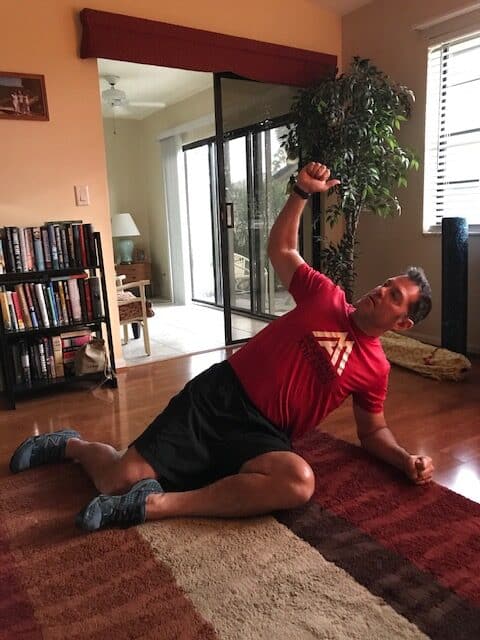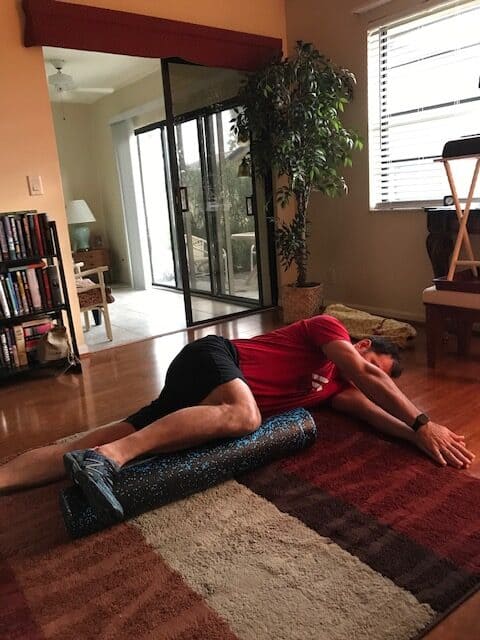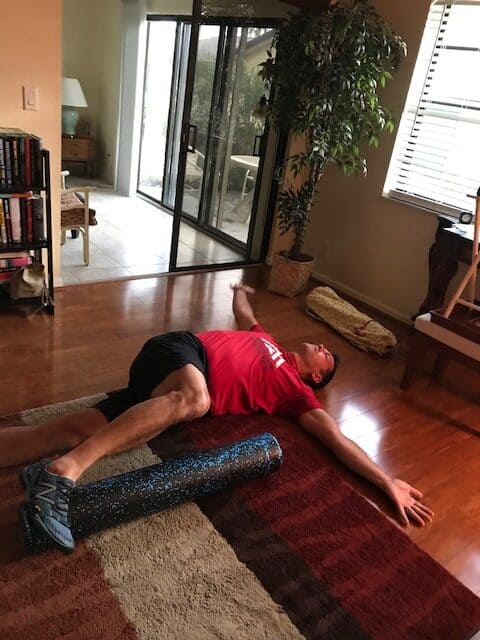There is not a person on this planet who does not want to improve their training output in the gym. Many people typically do just a few quick stretches or a few warm-up repetitions for the upcoming exercise and that’s it. A specific warm-up preceding strength training – geared towards individual needs – will improve how your body feels and moves in that workout. Period. The so-called warm-up box should always be checked prior to any strength training session. If you want to get more out of the workout that is.
The key, is to first find what works best for your body. Some gym-goers require an easy dynamic warm-up to break a sweat, while others respond better to targeted mobility work. This in turn, opens up tight, restricted muscle and connective tissue. Sometimes a few warm-up sets prior to lifting just doesn’t do the trick. The following sequence is great to do before any strength or cardio workout. It is specifically targeted to prepare the thoracic spine, commonly referred to as the T-spine, for the upcoming workout.
The majority of Americans, both young and old, spend hours each day sitting. As a result, muscles shorten and connective tissue (fascia in particular) becomes restrictive. A quick mobility series like this one will increase blood flow to these areas and as a result you’ll feel, move, and lift better in the workout.
Try This Warm-up Before Strength Training
Take a pair of tennis balls and either tape them together with electrical tape or place them in a sock and tie off the end. There is also a product you can purchase called a peanut that will also work nicely. The idea is to place the tennis balls in contact with your back. Each of the tennis balls end up on the left and right sides of your erector spinae muscles away from your spine. Then lie down on it. Begin at the first thoracic vertebrae below the seventh cervical, where when you flex your neck you can feel the “bump” and slowly move (“roll”) down towards your lumbar spine. Spend about 30-45 seconds manipulating the tennis balls into the muscle before moving down 1-2 inches. There are twelve thoracic vertebrae so you will need to reposition your body that many times. View the the following Instagram clip to see how to correctly position your body and perform the exercise.
3-Step Thoracic Mobility Series
After you spend a few minutes having fun with your tennis balls, try these three mobility movements. The idea is to “insert here” the specific mobility drill your body may need. I’m showing you just one area (thoracic spine), it may be a different area altogether, like the hips, shoulder – whatever. Check out the following Instagram clip on how to perform each movement in this 3-step mobility series. Below are pictures (start/finish) of each of the three movements that make up this mobility series.
Kneeling Thoracic Rotation (start/finish)
Side-Lying Thoracic Rotation
Supine Thoracic Rotation (Windmill)
Note: The finish (end point) should be (eventually) with the lower leg making contact with the foam roller (looks like somebody is a bit tight in the photo below). You can also use a yoga block, small medicine ball or whatever else is of similar height to support the leg. Finally, you can also perform this particular movement on your side with the hips and knees kept at right angles without the aid of any props. The arms are positioned the same way and the movement occurs in the same manner as pictured.
Mobility Warm-up Before Strength Training (Prescription)
Week 1-2: Perform 6-8 repetitions x 1 (2-3x/week)
Week 3-4: Perform 10-15 repetitions x 2 (3-4x/week)
Just a week or two of incorporating these movements into your warm-up or post workout routine, will lead to a big pay off. You will notice your body feels and moves much better, even after the first session. Enjoy the additional freedom of movement you’re going to get if you make this a regular occurrence.
Stay Strong Together
Try Jefit app, named one of the best apps for 2023 by Lifewire, GLAMOUR, Appgrooves, and in 2020 & 2021 by PC Magazine, Men’s Health, The Manual, the Greatist, and many others. The app comes equipped with a customizable workout planner and training log. The app also has ability to track data, offer audio cues, and has a feature to share workouts with friends. Take advantage of Jefits exercise database for your strength workouts. Visit our members-only Facebook group. Connect with like-minded people, share tips, and advice to help get closer to reaching your fitness goals.
- Hybrid Metabolic Strength Training for Faster Results - December 10, 2025
- Why Lifters Choose JEFIT App for Real Strength Gains - December 3, 2025
- Nutrition Trends Bodybuilders are Talking About in 2025 - November 26, 2025






